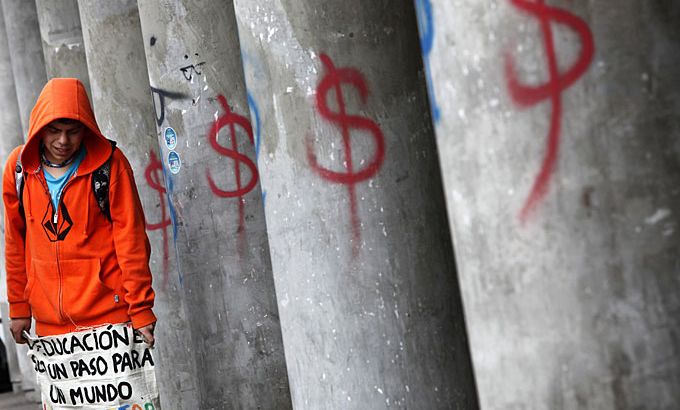
Will Chile’s education system see reform?
As student protests continue in the streets of Santiago, we ask if the government will heed their demands for equality.
It became known as the Chilean Winter. For several months last year tens of thousands of students from high schools and universities across the country organised sit-ins, large marches and even a massive choreographed street dance.
|
“Some sectors of the student movement from the left smell blood in the water because they know they’re facing a very weak president that lacks core principles. That’s why they are radicalising themselves.” – Juan Carlos Hidalgo, a Latin America analyst at The Cato Institute |
They were demanding a free education system for all.
Keep reading
list of 4 items‘Triple spending’: Zimbabweans bear cost of changing to new ZiG currency
‘We share with rats’: Neglect, empty promises for S African hostel-dwellers
Thirty years waiting for a house: South Africa’s ‘backyard’ dwellers
Chile’s education system is one of the most privatised in the world. And, when adjusted for the average income, the country’s universities are among the most expensive.
As the protests grew, the popularity of Sebastian Pinera, Chile’s centre-right president, declined to the lowest level of any Chilean leader in modern history.
This week the government announced some reforms, including a reduction in the interest rates on student loans.
On Chilean TV a defiant Pinera argued that his reforms will make a real difference: “This is a profound change. What it seeks to do is to transform education into a large-scale mechanism for the creation and equalisation of opportunities, for both quality and equality.”
|
“You do the math, it is impossible for the middle class and the poor family to get access so the government is the only factor that can improve the inequality in the system, which is now totally broken.” – Patricio Zamorano, a professor at George Washington University |
But protesters say the measures do not go far enough. They resumed massive marches vowing not to stop pushing until their demands are met.
Camila Vallejo, one of the most prominent student leaders, says the government’s promises are not enough: “What is perverse about this system is that it was necessary to eliminate private banks from the agenda, but that doesn’t resolve the problem of profiting from education. The student financing proposal by the government just reinforces the subsidies for those who profit from educational institutions.”
So, what is at stake for Pinera as the protest re-ignites? Should the government do more to satisfy the demands of the students?
Joining presenter Anand Naidoo on Inside Story Americas to discuss this are guests: Patricio Zamorano, a professor at George Washington University; Juan Carlos Hidalgo, a Latin America analyst at The Cato Institute, a Washington DC-based think tank that promotes free market policies; and Eric Farnsworth, the vice-president of the Council of the Americas.
|
“The system does need some reforms … [but if] the movement becomes hijacked or taken over or even accepting a more radical element that have different interests that are creating violence … that’s counter-productive.” Eric Farnsworth, the vice-president of the Council of the Americas |
COST OF EDUCATION IN CHILE:
- One of the highest in the world with university tuition fees costing $3,400 a year; the average annual salary is $8,500
- Upon graduation students on average are saddled with $40,000 of debt
- Just 40 per cent of Chilean children receive a free secondary education while the rest attend charter or private schools
- Chile’s president is sending to congress a tax proposal that will raise $700m
- Students reject this proposal as inadequate, saying it will cost $1.8b to finance public education